(Note: This post first appeared earlier today on Minnov8.)
Well, let's say nicely funded, anyway — a fully subscribed seed round that fulfills their near-term capital needs. I wanted to write a post to report the latest update on this amazing Minnesota tech startup: Kidblog. You've seen me write about these guys before: earlier this summer … and almost a year ago when I posted an update from the EduTech Minnesota conference, when the company hit a million users. We also had one of the Kidblog cofounders as our guest on the podcast about that same time: Minnov8 Gang 97: R U Kidding about Kidblog?

The company launched a new website and identity in August. But here's the biggest update of all: it just reported its user count has shot past 1.8 million! Kidblog is a safe blogging platform designed for K-12 teachers, students, and schools — and it stands head-and-shoulders above other solutions out there. It's an amazing "Grown in Minnesota" story that is a testament to the Internet innovation that happens here in our state!
I've known the cofounders, Matt Hardy (left, with admirer) and Dan Flies, for at least three years, and have been closely monitoring their progress. So, I'm especially excited about the success they're
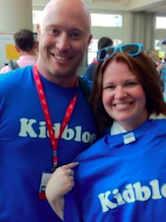 achieving. They've now received validation from some very savvy investors,
achieving. They've now received validation from some very savvy investors,
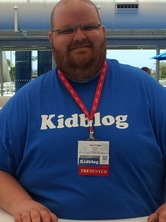 not to speak of even more from their market: the teachers who have loved them for a long time, and continue to support the product with gushing testimonials and positive reviews.
not to speak of even more from their market: the teachers who have loved them for a long time, and continue to support the product with gushing testimonials and positive reviews.
The $400K seed round Kidblog opened in the spring was completed in June, with California investors Scott Banister, 500 Startups, and Maneesh Arora participating, joined by Minnesota angels Peter Schleider (RKB Capital) and Scott Burns (founder of GovDelivery).
Matt and Dan, who met as college buddies at U of M-Morris, have worked really hard to build something great. Kidblog began as a passion for them, and very much continues to be. It's only within the past year that they didn't have to maintain days jobs, too! Matt was a primary school teacher in Eden Prairie for many years, and Dan has worked in IT, most recently at Lawson Software.
Here's how they describe their creation: "Kidblog is built by teachers, for teachers, so students can get the most out of the writing process. Our mission is to empower teachers to embrace the benefits of the coming digital revolution in education. As students become creators – not just consumers – of information, we recognize the crucial role of teachers as discussion moderators and content curators in the classroom. With Kidblog, teachers monitor and control all activity within their classroom blogging community."
See the video interview below for more on their summer in the Valley. The duo participated in a large edutech event in San Diego in late June, where Matt said "they received a lot of love" from educators, and were the envy of other edutech startups that exhibited. The two wrote about that experience in this blog post.
During their last month in Mountain View, on August 20, Kidblog released a massive update to its platform. "We’ve listened to our users and made the world’s best student-publishing platform even better with a plethora of new features for teachers and students," they declared on this blog post: 14 New Kidblog Features You're Guaranteed to Love.
Stay in touch with Kidblog at its company blog here. Get more great updates at their Facebook page (including posts about their summer in CA). And follow the company on Twitter @KidblogDotOrg.
Here's the eight-minute interview I recorded before we had lunch on Wednesday:
I asked a few followup questions of Matt. Here's that exchange:
Graeme: What's your stance now on Minnesota vs. California as far as a base of operations?
Matt Hardy: We deliberated carefully about these two locales. Silicon Valley is the heart of the startup universe and access to capital is unparalleled. Minneapolis has its own burgeoning startup culture, and there is developer talent here equal to the Bay Area. Cost of operations in Minnesota will be significantly lower. We can fly to San Francisco four times a month with the cash we save by not paying rent there.
Graeme: Did any existing or potential investors in California tell you they thought you should, or would eventually have to, relocate to the Bay Area?
Matt Hardy: None of our current investors has given us an ultimatum. It was suggested that it will be harder to raise funds with a pre-revenue, consumer web, growth model outside of Silicon Valley. We agree, but we also know that savvy investors can identify great companies anywhere. Dave McClure of 500 Startups has indicated that some VCs in the Valley can miss opportunities by limiting investments to their own backyard. (Here's a great recent post Dave wrote that touched on that point — it's long, but filled with insights for startup founders and investors.)
Graeme: What was the attitude of your 500 Startups peers to this question, assuming the vast majority of them are based in the Bay Area?
Matt Hardy: Many founders in the Bay Area are gravitating toward San Francisco specifically. As Google and Facebook absorb talent at the southern end of the Peninsula, the hot place to be is the city. The sheer density of startups and investors creates a climate that drives everyone to build products better, bigger, faster. You definitely feel pushed to keep up with other teams doing awesome things. On the other hand, you can also get so caught up in the "cool kid" scene, attending trendy events and worshiping certain entrepreneurial icons, that you forget to put your head down and build something great that people want. We've spent the last three months in Mountain View working 16-hour days to build just that — the world's best student-publishing platform, beloved by teachers around the world.
Best of luck to Matt and Dan as they grow their business! This is a company I have no doubt will continue to make Minnesota proud.


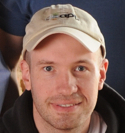
![Rackspace® — API Adoption And The Open Cloud: What Is An API? [Infographic]](https://c3414940.r40.cf0.rackcdn.com/blog/wp-content/uploads/2012/07/API_Infographic_Rackspace_July2012.png)
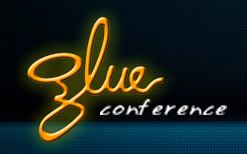
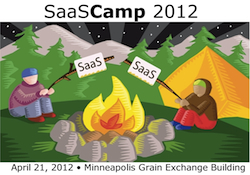

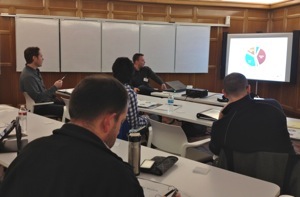

Recent Comments